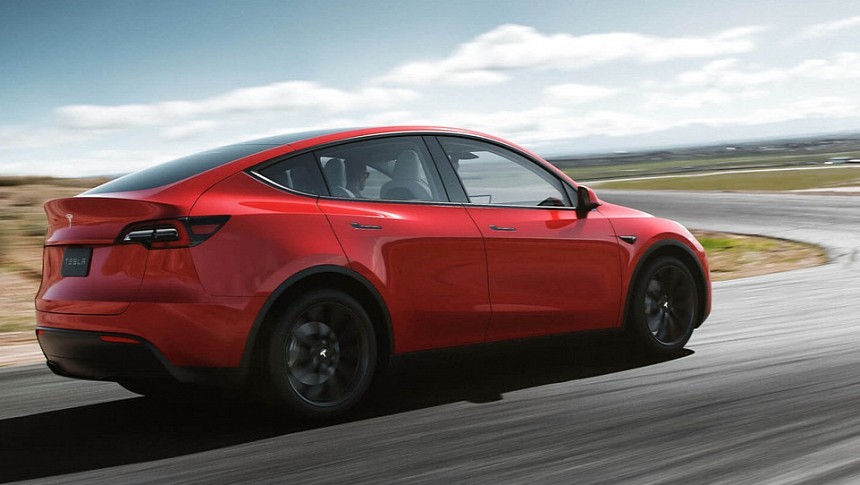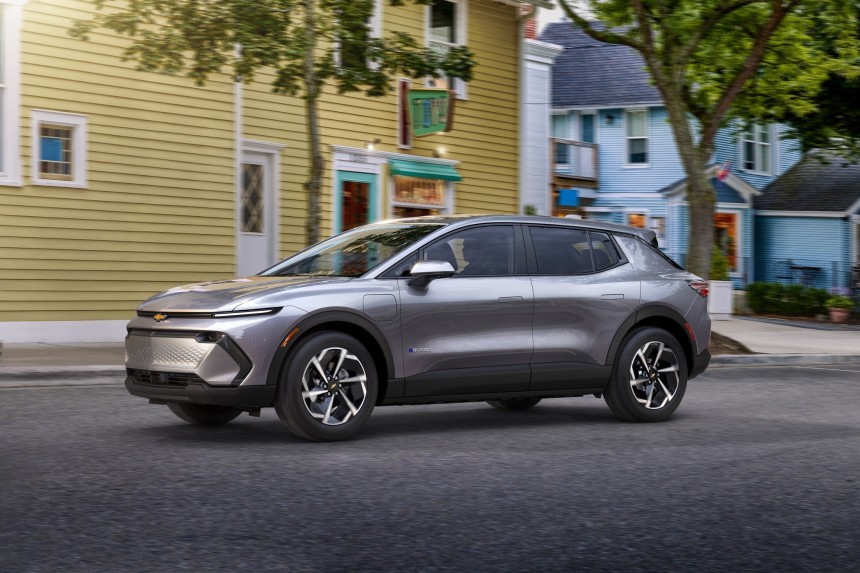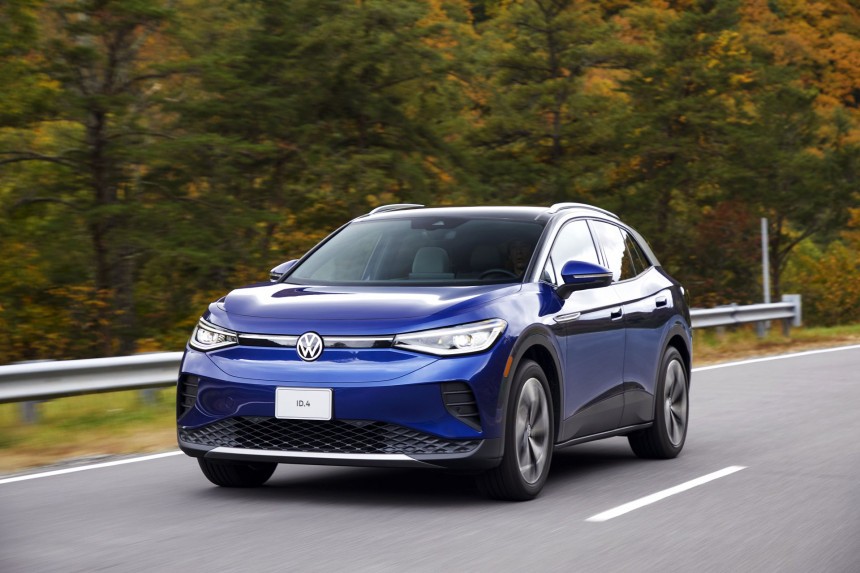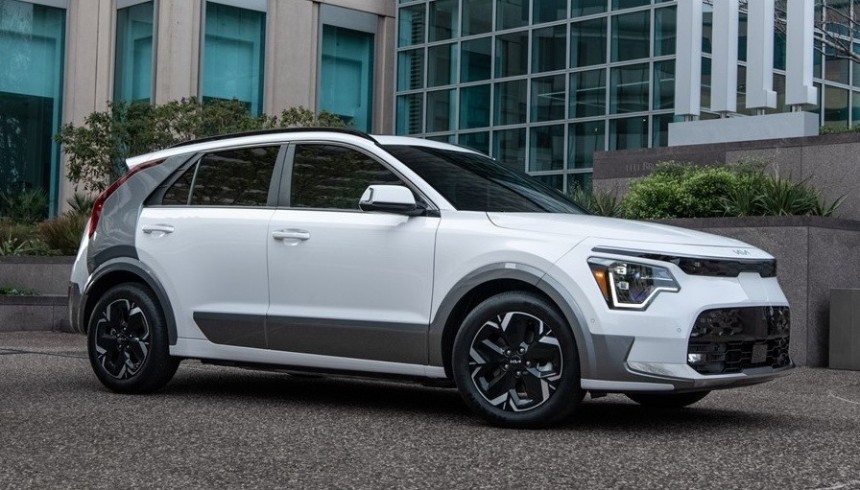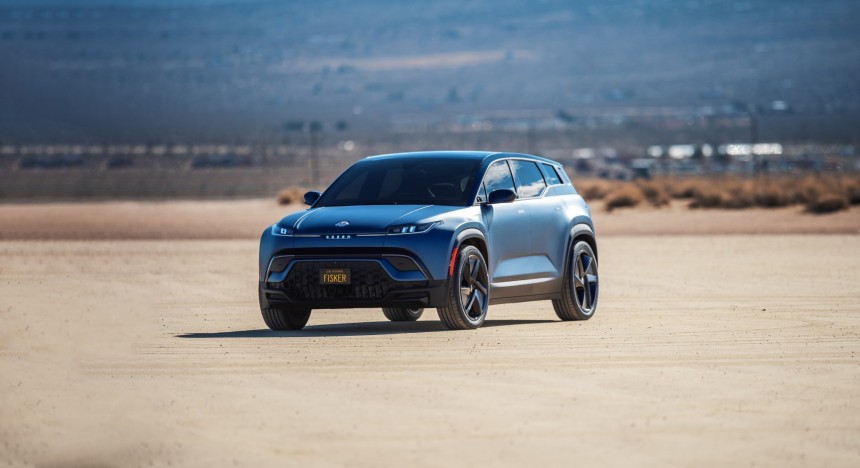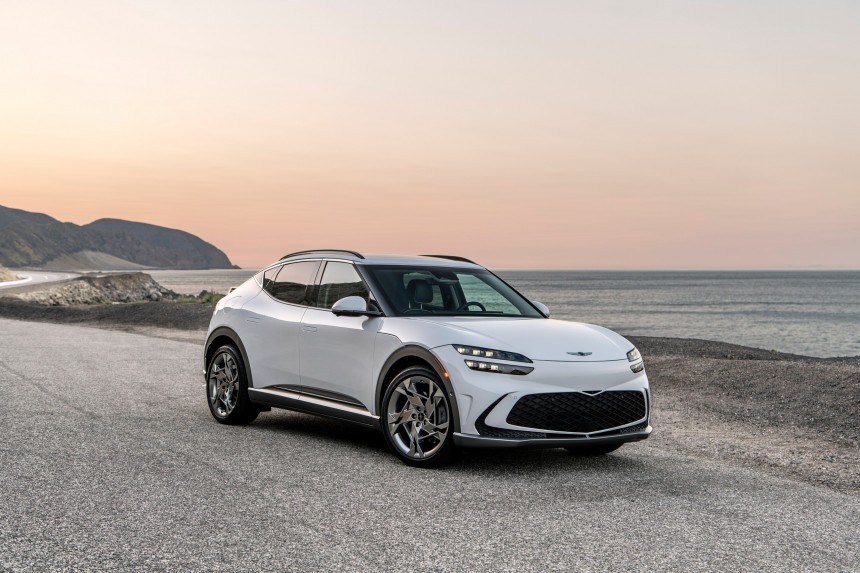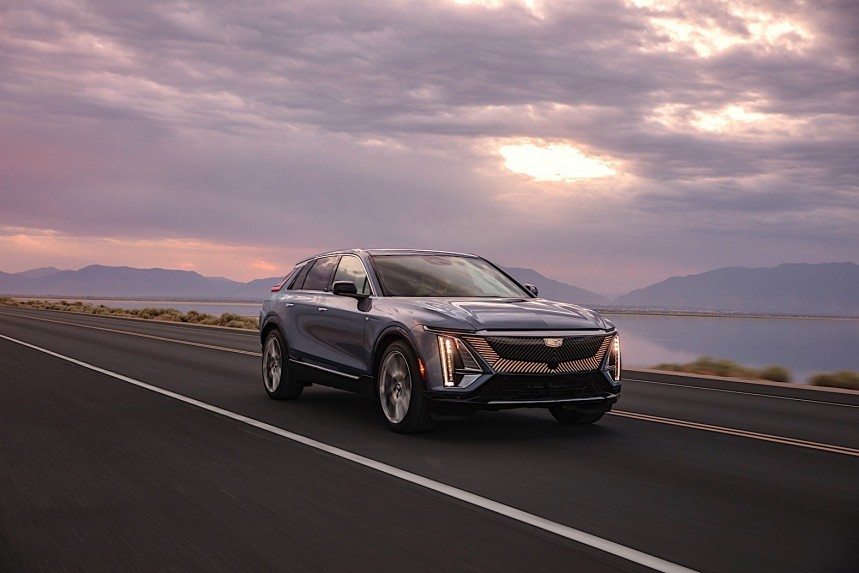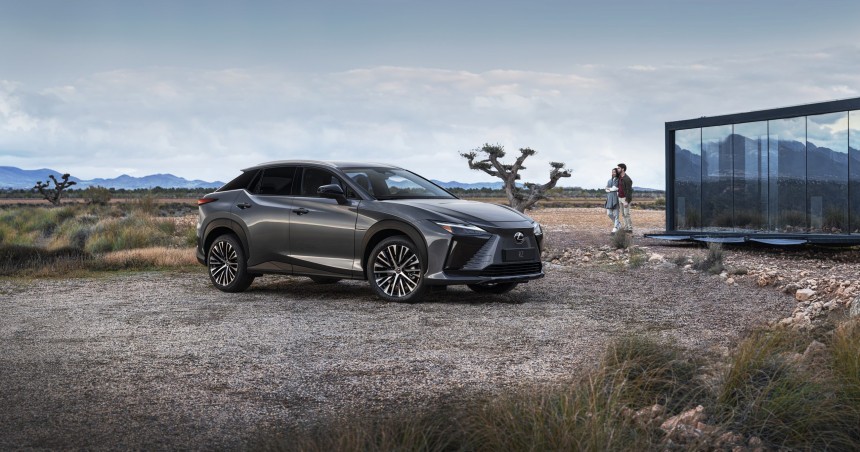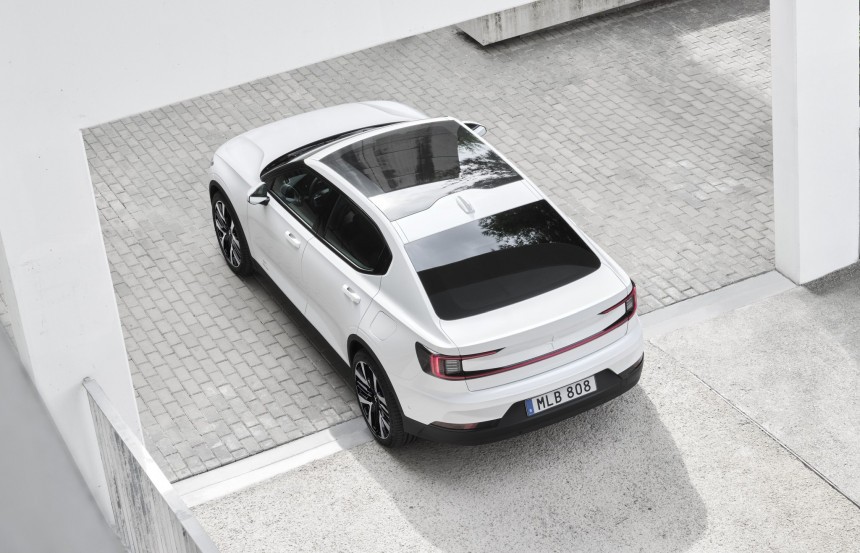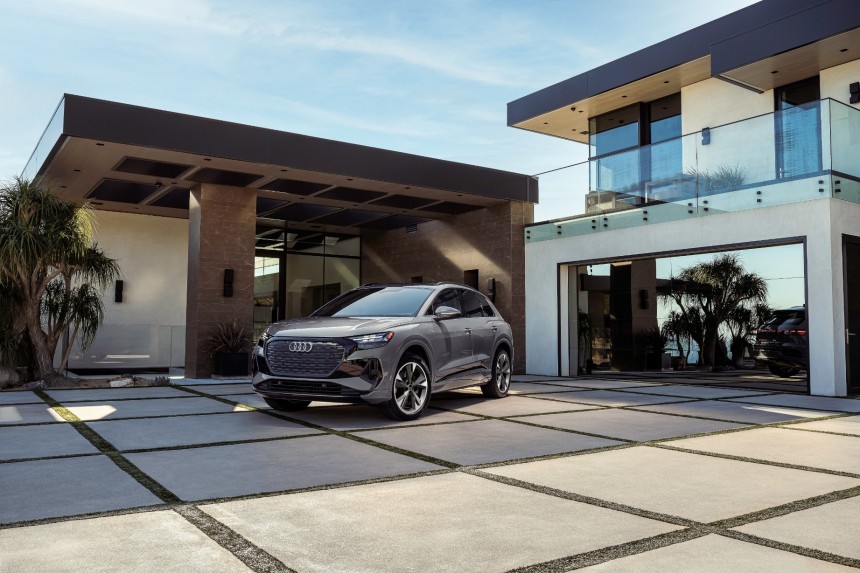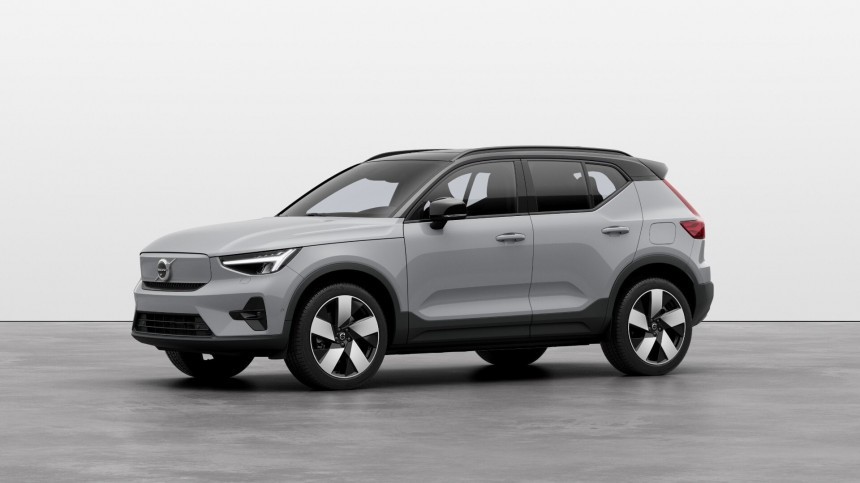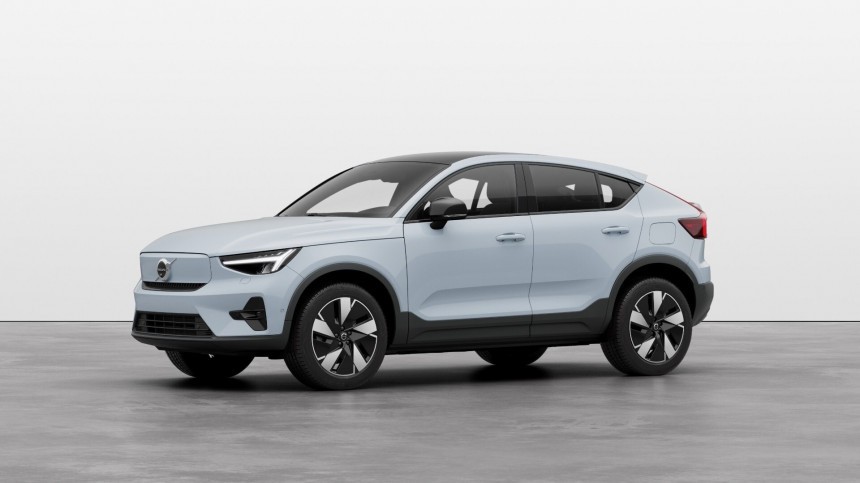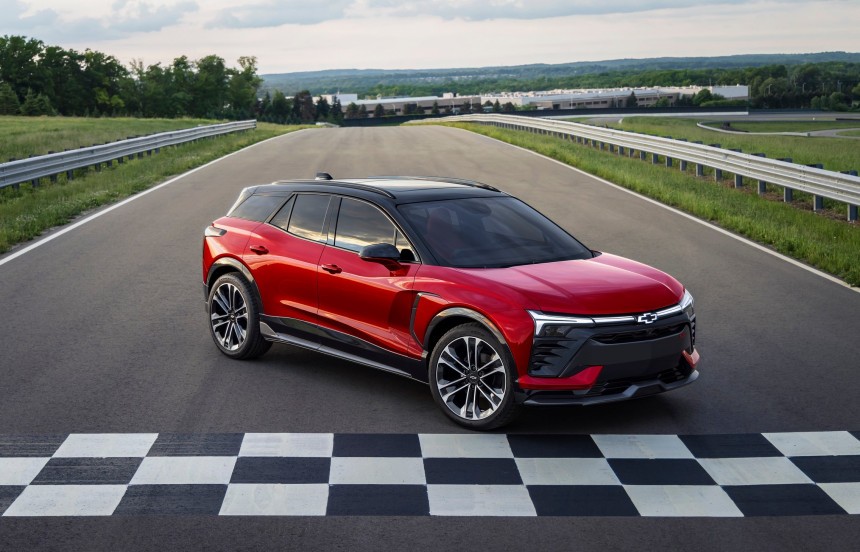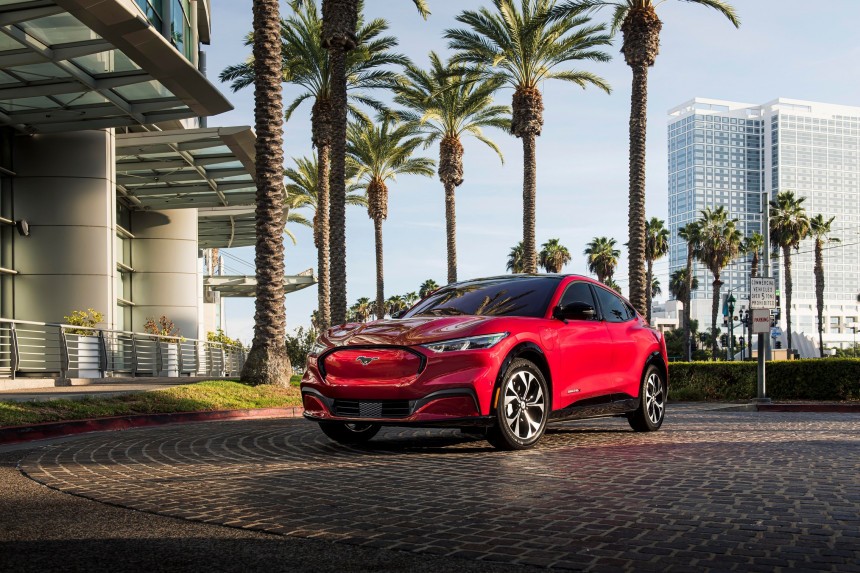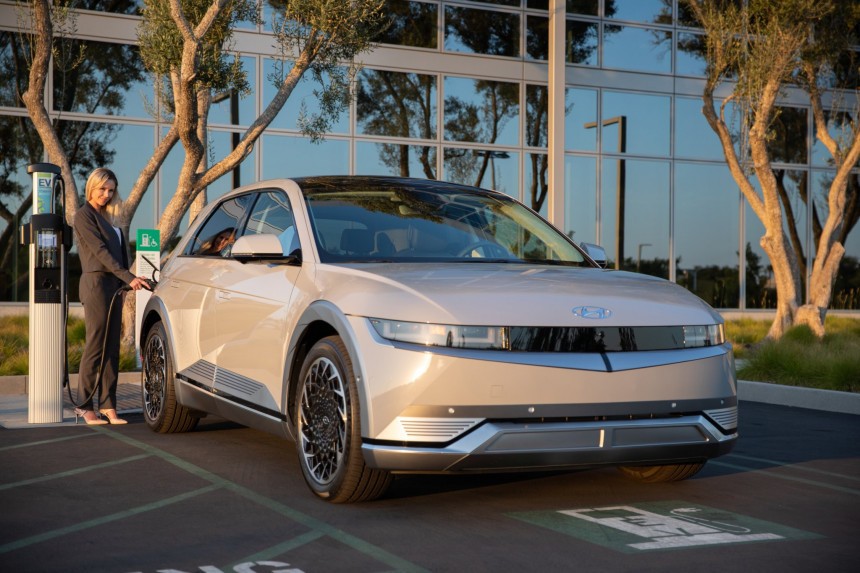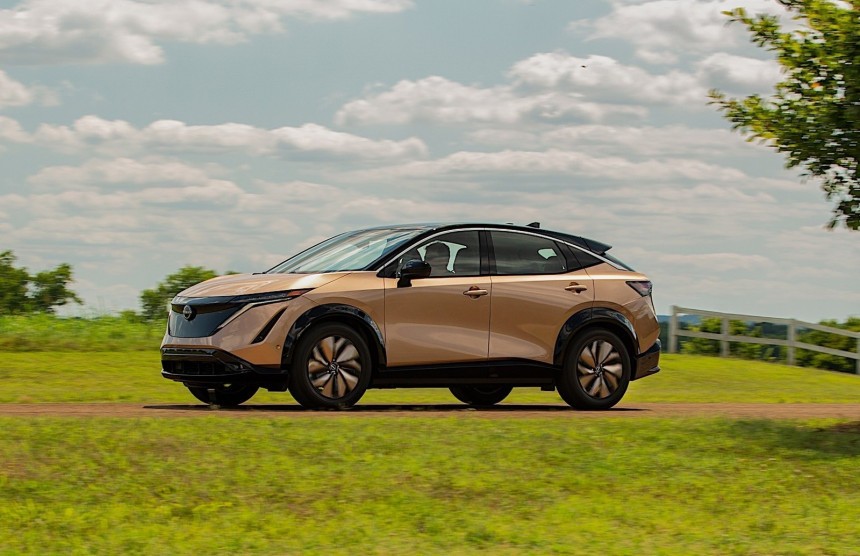The latest electric vehicle in Tesla's lineup, the Model Y, launched in 2019 and became the brand's best-selling model in a very short time. Tesla Model Y has many qualities, but with newer electric vehicles launching in the market every month, potential buyers need to think twice before pulling the trigger.
When it started sales in 2020, the Tesla Model Y was dismissed by critics as just a Model 3 with a slightly larger cabin space. In all fairness, the two models share more than just the automotive platform. The interior is almost identical, and seen from the outside, they are hard to tell apart by an untrained eye. The Model Y is larger, but that is not always obvious. The main visual differences are a repeater camera flare that protrudes into the front door and a larger rear door, cut more vertically on the Model Y. This also features a large liftgate, making it a more practical car.
The Model Y became famous thanks to the ever-growing popularity of SUVs, and the latest price cuts made it an enticing proposition. It's only slightly more expensive than the Model 3. Still, it offers much more space for passengers and cargo, not to mention the image boost. Although not evident from the outside, the Model Y also benefitted from the improvements Tesla made since it launched the Model 3 in 2017. The Model Y was updated regularly, whereas the sedan was almost forgotten.
In the US, the 2023 Tesla Model 3 is offered in three trims, all of them with all-wheel drive. The base-version Model Y AWD features 4680 battery cells and retails for $47,740 before taxes and incentives. The Model Y Long Range AWD starts at $50,490, while a Model Y Performance will set you back $54,490. Range-wise, you can count the 4680-cell Model Y to go up to 279 miles (449 km) on a charge, while the Long Range variant will take you 330 miles (531 km) on a charge. The Model Y Performance falls in the middle, with 303 miles (488 km).
No matter how popular the Tesla Model Y is, some still don't like it. I must admit, the design is rather bland, and its close resemblance to its smaller brother doesn't help it very much. Add to that that most Tesla Model Y EVs on the road are white, and you'd forgive those wanting to drive something else. The good news is that many electric vehicles launched recently in the US are targeting Model Y buyers, so there are plenty to choose from. I've prepared 16 alternatives that would make prospective Tesla Model Y buyers think twice before pulling the trigger.
Tesla Model Y alternatives for those on a tight budget
Power: 210-290 horsepower
Battery capacity: 55-65 kWh
Range: 250-300 miles
IRA tax credit: $7,500
Planned to go on sale later this year, the Chevrolet Equinox EV aims to replace the Bolt EV/Bolt EUV as the most affordable EV in the market. Chevrolet promised a $30,000 starting price, although GM CEO Mary Barra warned that electric vehicles in the $30,000-$40,000 price range cannot be profitable. The most expensive Equinox EV will be the 3RS trim, with an MSRP of $44,000.
Customers will be able to choose between front-wheel-drive and all-wheel-drive configurations. The former relies on a 210-horsepower electric motor, while the most powerful versions deliver up to 290 horsepower. The FWD base version should also come with a smaller battery pack of around 55 kWh and a maximum of 250 miles (402 km).
Although the bigger battery pack has only 65 kWh, similar to the Chevy Bolt, the Equinox EV will go further on a charge, up to 300 miles (483 km) instead of 259 miles (417 km). This shows the improvements brought by the Ultium architecture. The Chevrolet Equinox EV will support 150-kW DC fast charging, being able to add up to 70 miles (113 km) in just 10 minutes of charging.
Pros: affordable, sporty design, comprehensive safety package
Cons: longer charging times
Power: 201-295 horsepower
Battery capacity: 62-82 kWh
Range: 209-275 miles
IRA tax credit: $7,500
Volkswagen builds the ID.4 in its factory in Chattanooga, Tennessee, and the crossover has been recently revised to better suit American customers. This also allows it to qualify for the $7,500 IRA tax credit, unlike its rivals imported from Europe, Korea, and Japan.
The ID.4 is offered in five trims (Standard, Pro, S, Pro S, and Pro S Plus), with prices ranging from $38,995 to $55,245. Rear-wheel-drive and all-wheel-drive variants are available to order, with 210 horsepower and 295 horsepower, respectively. Ride quality has been better than that of the Tesla Model Y. However, the recent builds with Comfort suspension have improved things a lot on Tesla's side.
The Volkswagen ID.4 has a slightly shorter range than Tesla Model Y, which tops at 275 miles (443 km). Owners also constantly complain about software issues, although these seem to have been mostly sorted out with recent updates. On the plus side, the ID.4 offers a huge cargo space of 64.2 cu-ft (1,820 liters), almost as big as the Model Y (72.1 cu-ft/2,040 liters).
Pros: affordable, comfortable, spacious interior, decent performance
Cons: no frunk, cluttered infotainment interface, software issues
Power: 201 horsepower
Battery capacity: 65 kWh
Range: 253 miles
IRA tax credit: no
Kia redesigned the Niro EV from the ground up for the 2023 model year, cramming more equipment and improving specifications. Sadly, the Niro EV is only available with front-wheel drive, with 201 horsepower and a maximum range of 253 miles (407 km). Charging is relatively slow, as the Niro EV needs 45 minutes to charge from 10% to 80% at an 85-kW charger.
As Kia's entry-level EV, the Niro EV doesn't have a heat pump fitted as standard, so make sure you configure it with the Preserve Package if you're living in a colder region. On the plus side, the equipment is rich even in the base trim Wind. Goodies include dual 10.25-inch screens for the instrument cluster and infotainment system, an eight-speaker audio system from Harman Kardon, and a bi-tone interior theme for the Wave top trim.
A comprehensive driver-assist package is also standard, making the Kia Niro EV a compelling proposition. Those looking for even more options and an arguably better EV should also consider the Kia EV6, which starts at $42,600 and is also available as an AWD electric crossover.
Pros: moderate price, rich equipment, comprehensive safety package
Cons: heat pump is optional, no AWD variant, slow charging, limited range
Power: 275-550 horsepower
Battery capacity: up to 106 kWh
Range: 250-360 miles
IRA tax credit: no
Fisker Ocean is arguably a better-looking SUV than the Tesla Model Y, and the top trims are almost as fast as the Model Y Performance, with a 0-60 time of 3.6 seconds. The interior looks simple but is sparkling and well put together, making it a solid choice for those who appreciate nice things. Four trims are available: Sport, Ultra, Extreme, and One.
The Fisker Ocean can be ordered with either front-wheel-drive or all-wheel drive, the latter featuring a rear disconnect feature to improve efficiency. The top trims rely on a 106-kWh battery pack, which gives them a range of up to 360 miles (579 km). A smaller battery is fitted in the entry-level Ocean Sport. Fisker doesn't mention the capacity but says it should offer a 250-mile (402-km) range.
Fisker Ocean also features a solar roof with the Extreme and One trims called SolarSky Roof. When fully exposed to the sun, Fisker claims that the Ocean Extreme can produce up to 1,500 miles of travel per year using solar power.
Pros: moderate price, attractive design, solar roof, good performance
Cons: limited rea-seat legroom, long waiting list
Tesla Model Y alternatives with better interior design and quality
Power: 314-429 horsepower
Battery capacity: 77 kWh
Range: 235-248 miles
IRA tax credit: no
Due to limited availability, Genesis only sells the luxury cousin of the Hyundai Ioniq 5 and Kia EV6 in 23 US states, but it has already gained its fans. The elegant design and lush cabin puts it above the Tesla Model Y in terms of build quality. It's also packed to the brim with sophisticated technologies, justifying the more elevated price.
The Genesis GV60 is offered in two all-wheel-drive variants, with the Advanced trim delivering 314 horsepower and Performance upping the game to 429 horsepower. This allows it to be almost as fast as the Model Y Performance, with a 0-60 mph (0-97 kph) time of 3.7 seconds.
The GV60 comes with the advantages afforded by the 800-volt E-GMP architecture. This means it supports up to 350-kW charging power and needs only 18 minutes to charge from 10% to 80%. The less powerful variant can go 248 miles (399 km) on a charge, whereas the Performance offers 235 miles (378 km) of range.
Pros: comfortable and luxurious cabin, fast charging, good performance
Cons: range on the low side, expensive, limited availability
Power: 340-500 horsepower
Battery capacity: 102 kWh
Range: 307-314 miles
IRA tax credit: $7,500
The first electric vehicle in Cadillac's lineup offers a stylish cabin design and an exterior that blurs the lines between an SUV and a wagon. The elevated driving position provides good visibility, and the seats are comfortable. The dashboard is dominated by a massive 33-inch OLED screen. However, Cadillac also offers physical buttons to access the most important functions.
The Cadillac Lyriq features GM's Ultium battery with a capacity of 102 kWh and one or two electric motors for the RWD and AWD variants. The former develops 340 horsepower, while the Lyriq AWD boasts 500 horsepower. Depending on the configuration, the luxury crossover can go between 307 and 314 miles (494-505 km), which is the norm for a competent electric vehicle these days.
Our test drive with the Cadillac Lyriq revealed that it is quick and smooth, even in its RWD version. Steering and braking have a natural feel, and regenerative braking can be adjusted to one's liking using the paddle on the left side of the steering wheel. All in all, Cadillac Lyriq is a solid alternative to the Model Y.
Pros: luxurious interior, good range, excellent performance
Cons: expensive, limited availability
Power: 308 horsepower
Battery capacity: 71 kWh
Range: 220 miles
IRA tax credit: no
The RZ 450e is Lexus's take on the Toyota bZ4X and Subaru Soltera. It's not just a rebranded bZ4X, though, as the Lexus crossover offers more power besides the luxury goodies. The standard Direct4 all-wheel-drive system can control front-to-rear torque distribution between 100:0 and 0:100, depending on the situation.
Expect improved dynamics, which will only get better with the upcoming steer-by-wire system. This will allow Lexus to vary the front wheels' angle independently from the steering wheel angle. This way, the yoke finally makes sense, as it only needs to be rotated 75 degrees in each direction for a total of 150-degree range.
Although some might cheer at the power boost offered by the RZ 450e, this also comes with limitations. Because the Lexus crossover features the same battery pack as the Toyota bZ4X, more power means less range. In this case, the Lexus RZ 450e is EPA-rated for only 220 miles on a charge, one of the shortest in the segment.
Pros: excellent build quality, exciting technology
Cons: limited range, slow charging, cold-weather performance
Power: 299-455 horsepower
Battery capacity: 78-82 kWh
Range: 247-320 miles
IRA tax credit: No
The Polestar 2 is hard to classify, as its design and features make it a Frankenstein between a crossover, coupe, and hatchback. Its charm is undeniable, and it also comes with better equipment and a sportier ride compared to the Tesla Model Y.
The 2024 model year should start deliveries in August with more power and range, making it even more desirable. The RWD variant replaces the previous FWD offering, with 68 more horsepower for a total of 299 horsepower. The upgraded battery pack allows the Polestar 2 RWD to have a 320-mile (515-km) range.
The AWD variants lose 4 kWh from the battery pack. In the standard configuration, it develops 421 horsepower and can go 276 miles (444 km) on a charge. The Performance pack raises the power to 455 horsepower and tanks the range to 247 miles (398 km).
Pros: impressive design, well-equipped interior, great technological package
Cons: range could be better, pricy options, limited rear headroom
Tesla Model Y alternatives for those who appreciate smart luxury
Power: 201-295 horsepower
Battery capacity: 82 kWh
Range: 236-265 miles
IRA tax credit: No
Even though Sandy Munro dismissed it as just a more expensive Volkswagen ID.4, the Audi Q4 e-tron features nicer materials and a rear-seat entertainment system. The Q4 is significantly quieter and drives better than the Volkswagen ID.4. Technologically, it is almost identical to its Volkswagen twin, with a rear-wheel-drive configuration offering 201 horsepower or an AWD setup with 295 horsepower.
The 82-kWh battery pack (usable capacity of 77 kWh) allows it to travel up to 265 miles (426 km) on a charge (RWD version). The Q4 e-tron stops after 236 miles (380 km) when fitted with the additional front motor. It can charge from 10% to 80% in 38 minutes when hooked to a 150-kW DC charger.
If the Audi Q4 e-tron doesn't seem exclusive enough compared to the Volkswagen ID.4, you should look at the Q4 Sportback e-tron. The privilege of having a slanted roof will cost you dearly, though, as it starts at $58,200 for what is essentially the same car with less space in the rear.
Pros: comfortable, good driving behavior, spacious cabin
Cons: range could be better, expensive, charging is still slow for a modern EV
Power: 188-288 horsepower
Battery capacity: 71 kWh
Range: 221-245 miles
IRA tax credit: No
Although more expensive than the Tesla Model Y, the Mercedes-Benz EQB SUV is a luxurious electric vehicle. It comes in three variants, starting with the EQB 250+ SUV, the front-wheel-drive version. The EQB 300 4Matic SUV adds a rear motor for a total of 225 horsepower, while the EQB 350 4Matic SUV offers 288 horsepower.
Like the Model Y, the Mercedes-Benz EQB SUV also offers the option of a third seat row for up to seven seats. The space is good, but not enough for a long road trip on one of the jump seats in the back. Also, in a seven-seat configuration, the cargo capacity drops dramatically. The good news is that the fit and finish are above Tesla, and the user interface is easy to understand.
The EQB SUV is fun to drive, despite having relatively modest power. Regenerative braking is adjustable using the paddles on the steering wheel. Depending on the variant, the EQB SUV can go as far as 245 miles (394 km) on a charge, which is not very much. Charging from 10% to 80% takes 32 minutes.
Pros: comfortable, good driving behavior, premium finish, quality materials
Cons: range could be better, regenerative braking needs improvements
Power: 402 horsepower
Battery capacity: 78 kWh
Range: 223 miles
IRA tax credit: No
Volvo models are part of what people like to call "understated luxury," offering impressive features without being as flashy as the German luxury models. They're also flawlessly assembled, so you won't notice quality problems. The spacious cabin is well-equipped, and Volvo offers a comprehensive safety package with the XC40 Recharge.
The electric drive train is surprisingly powerful, with 402 horsepower in a dual-motor configuration. This was shared with the Polestar 2, although the Polestar has moved to upgraded specifications. The powerful drivetrain allows the XC40 Recharge to sprint from 0 to 60 mph in 4.7 seconds. It's not Model Y Performance level, but it's no slouch either.
Still, with a similar usable battery capacity of 75 kWh, the Volvo range is limited to 223 miles. In contrast, the Model Y goes over 300 miles (482 km). The DC fast charging capability is decent, as the Volvo XC40 Recharge needs 37 minutes to charge from 10% to 80%.
Pros: excellent performance, good build quality
Cons: disappointing range, not the best drive, pretty expensive
Power: 402 horsepower
Battery capacity: 78 kWh
Range: 226 miles
IRA tax credit: No
You could choose the nicer Volvo with a more streamlined coupe-SUV shape for a slight price bump. Despite the name difference, the C40 Recharge is still an XC40 underneath. The same battery and motor configuration power the Volvo crossover, although it's a tad faster to 60 mph (4.5 seconds instead of 4.7). The range is also 3 miles higher, thanks to better aerodynamics.
The nicer looks come at the price of a smaller trunk and limited headroom for the rear passengers. The cargo volume shrinks to 49 cu-ft (1,388 liters), compared to the 57.5 cu-ft (1,628 liters) in the case of the XC40 Recharge.
Like its brother, the Volvo C40 Recharge has an infotainment system powered by Google's Android Automotive operating system and a Harman Kardon Premium Sound system. A comprehensive driver-assist package is offered in standard.
Pros: excellent performance, good build quality, exclusive design
Cons: disappointing range, not the best drive, pretty expensive, limited cargo and rear headroom
Tesla Model Y alternatives for those who want a traditional crossover
Price: $44,995-$65,995
Power: up to 557 horsepower
Battery capacity: up to 102 kWh (estimate)
Range: 247-320 miles
IRA tax credit: $7,500
Chevrolet's second electric crossover is no budget model, like the Equinox EV, but a more upscale crossover, closer to the Cadillac Lyriq. With a maximum power of 557 horsepower for the SS variant, the Blazer EV is the closest to the Tesla Model Y Performance. Chevrolet claims a 0-60 mph in under 4 seconds, compared to the 3.5 seconds the MYP needs.
The Chevrolet Blazer EV SS will be the first available to buy this fall, with more trims available later. The base 1LT variant will be offered exclusively in an FWD configuration, while the 2LT can be purchased as both FWD and AWD. RS trims will also be available with an RWD setup.
Although Chevrolet doesn't mention the battery capacity, I expect the Blazer EV to feature the same 102-kWh pack as the Cadillac Lyriq, with a smaller option also offered on the lesser trims. They could still travel 247 miles (398 km) on a charge, with the bigger battery packs reaching 320 miles (515 km). Chevrolet promises the Blazer EV can recoup about 80 miles (130 km) in 10 minutes of charging when hooked to a 190-kW DC fast charger.
Pros: great styling, spacious cabin, impressive performance for the SS variant
Cons: too soon to judge
Power: 266-480 horsepower
Battery capacity: 70-91 kWh
Range: 224-312 miles
IRA tax credit: $3,750
Thanks to their similarities, the Ford Mustang Mach-E is probably the first Tesla Model Y alternative that springs to mind. Indeed, Ford developed the Mustang Mach-E as a Tesla Model Y competitor, although sales could have been better. The price certainly puts it on the same level, and performance is also excellent, with the added bonus that the electric Mustang is a blast to drive.
Four trims are available: Select, Premium, California Route 1, and GT. The first two can be ordered with either rear-wheel or all-wheel drive, whereas the top two configurations are only available with eAWD. Prices start at $42,995, slightly higher than the Tesla Model Y, especially when counting that the Mustang Mach-E only gets half the IRA tax credit.
As the name suggests, the electric pony is pretty agile and can do 0-60 in 5.8 seconds, even in its base trim. The GT version can do the trick in 3.8 seconds, thanks to its 480-horsepower drivetrain, almost as fast as the Model Y Performance. Still, the Tesla will get you further on a charge.
Pros: fun to drive, brisk performance in the GT trim, good range
Cons: reduced range in the cold, complicated user interface
Power: 168-320 horsepower
Battery capacity: 58-77.4 kWh
Range: 220-303 miles
IRA tax credit: No
The Ioniq 5 is Hyundai's first model built on an EV-dedicate platform, the widely acclaimed E-GMP. Technically, the Ioniq 5 is not very different from the Kia EV6 and the Genesis GV60. It features an 800-volt architecture that allows very short charging times. Still, the Ioniq 5 adopts a retro styling with Pony vibes, blending the boundaries between SUVs and hatchbacks.
The Ioniq 5 would've been a great Tesla Model Y alternative if Hyundai decided on a more powerful drivetrain similar to Kia EV6 GT. Even with the 320 horsepower, the electric crossover should be able to reach 60 mph in less than 5 seconds, which is no small feat. Range-wise, the most interesting variant is the RWD with the bigger 77-kWh battery pack, which can go up to 303 miles (488 km) on a charge.
Charging performance is top-notch, thanks to the E-GMP capabilities. When hooked to a compatible charger, Hyundai Ioniq 5 can charge from 10% to 80% in about 18 minutes, which is one of the shortest times in the market.
Pros: very short charging times, comfortable suspension, attractive design
Cons: power, range, and performance for the base version, no IRA tax credit
Power: 208-389 horsepower
Battery capacity: 63-87 kWh
Range: 205-304 miles
IRA tax credit: No
For a carmaker with one of the first electric vehicles in the market (Leaf), Nissan has performed poorly. Despite being one of the most affordable models, the second-generation Leaf has disappointed and has seen lackluster sales. Nissan Ariya should pick up where the Leaf failed, with much better specs, although availability is an issue.
The design doesn't break any molds, but the Nissan Ariya is roomy and comfortable and promises to be a very competent EV. Connectivity features and safety assist systems abound, and it doesn't lack comfort features either. Still, the pricing is rather bold for what it offers, and with no tax credit, it could be a tough buy.
Thankfully, the Ariya has decent performance, and in its best configuration, it can sprint from 0 to 60 mph in just 4.8 seconds. The 87-kWh battery pack allows it to travel up to 304 miles on a charge in the FWD Venture+ trim. Still, charging is limited to 130 kW, which leads to long charging times. Nissan claims 40 minutes are needed to charge the big battery from 10% to 80%.
Pros: good interior space, comprehensive tech package, decent performance
Cons: limited range, long charging times, elevated price
The Model Y became famous thanks to the ever-growing popularity of SUVs, and the latest price cuts made it an enticing proposition. It's only slightly more expensive than the Model 3. Still, it offers much more space for passengers and cargo, not to mention the image boost. Although not evident from the outside, the Model Y also benefitted from the improvements Tesla made since it launched the Model 3 in 2017. The Model Y was updated regularly, whereas the sedan was almost forgotten.
In the US, the 2023 Tesla Model 3 is offered in three trims, all of them with all-wheel drive. The base-version Model Y AWD features 4680 battery cells and retails for $47,740 before taxes and incentives. The Model Y Long Range AWD starts at $50,490, while a Model Y Performance will set you back $54,490. Range-wise, you can count the 4680-cell Model Y to go up to 279 miles (449 km) on a charge, while the Long Range variant will take you 330 miles (531 km) on a charge. The Model Y Performance falls in the middle, with 303 miles (488 km).
No matter how popular the Tesla Model Y is, some still don't like it. I must admit, the design is rather bland, and its close resemblance to its smaller brother doesn't help it very much. Add to that that most Tesla Model Y EVs on the road are white, and you'd forgive those wanting to drive something else. The good news is that many electric vehicles launched recently in the US are targeting Model Y buyers, so there are plenty to choose from. I've prepared 16 alternatives that would make prospective Tesla Model Y buyers think twice before pulling the trigger.
Tesla Model Y alternatives for those on a tight budget
1. Chevrolet Equinox EV
Price: $30,000-$44,000Power: 210-290 horsepower
Battery capacity: 55-65 kWh
Range: 250-300 miles
IRA tax credit: $7,500
Customers will be able to choose between front-wheel-drive and all-wheel-drive configurations. The former relies on a 210-horsepower electric motor, while the most powerful versions deliver up to 290 horsepower. The FWD base version should also come with a smaller battery pack of around 55 kWh and a maximum of 250 miles (402 km).
Although the bigger battery pack has only 65 kWh, similar to the Chevy Bolt, the Equinox EV will go further on a charge, up to 300 miles (483 km) instead of 259 miles (417 km). This shows the improvements brought by the Ultium architecture. The Chevrolet Equinox EV will support 150-kW DC fast charging, being able to add up to 70 miles (113 km) in just 10 minutes of charging.
Pros: affordable, sporty design, comprehensive safety package
Cons: longer charging times
2. Volkswagen ID.4
Price: $38,995-$55,245Power: 201-295 horsepower
Battery capacity: 62-82 kWh
Range: 209-275 miles
IRA tax credit: $7,500
The ID.4 is offered in five trims (Standard, Pro, S, Pro S, and Pro S Plus), with prices ranging from $38,995 to $55,245. Rear-wheel-drive and all-wheel-drive variants are available to order, with 210 horsepower and 295 horsepower, respectively. Ride quality has been better than that of the Tesla Model Y. However, the recent builds with Comfort suspension have improved things a lot on Tesla's side.
The Volkswagen ID.4 has a slightly shorter range than Tesla Model Y, which tops at 275 miles (443 km). Owners also constantly complain about software issues, although these seem to have been mostly sorted out with recent updates. On the plus side, the ID.4 offers a huge cargo space of 64.2 cu-ft (1,820 liters), almost as big as the Model Y (72.1 cu-ft/2,040 liters).
Pros: affordable, comfortable, spacious interior, decent performance
Cons: no frunk, cluttered infotainment interface, software issues
3. Kia Niro EV
Price: $39,550-$44,550Power: 201 horsepower
Battery capacity: 65 kWh
Range: 253 miles
IRA tax credit: no
As Kia's entry-level EV, the Niro EV doesn't have a heat pump fitted as standard, so make sure you configure it with the Preserve Package if you're living in a colder region. On the plus side, the equipment is rich even in the base trim Wind. Goodies include dual 10.25-inch screens for the instrument cluster and infotainment system, an eight-speaker audio system from Harman Kardon, and a bi-tone interior theme for the Wave top trim.
A comprehensive driver-assist package is also standard, making the Kia Niro EV a compelling proposition. Those looking for even more options and an arguably better EV should also consider the Kia EV6, which starts at $42,600 and is also available as an AWD electric crossover.
Pros: moderate price, rich equipment, comprehensive safety package
Cons: heat pump is optional, no AWD variant, slow charging, limited range
4. Fisker Ocean
Price: $37,550-$68,999Power: 275-550 horsepower
Battery capacity: up to 106 kWh
Range: 250-360 miles
IRA tax credit: no
The Fisker Ocean can be ordered with either front-wheel-drive or all-wheel drive, the latter featuring a rear disconnect feature to improve efficiency. The top trims rely on a 106-kWh battery pack, which gives them a range of up to 360 miles (579 km). A smaller battery is fitted in the entry-level Ocean Sport. Fisker doesn't mention the capacity but says it should offer a 250-mile (402-km) range.
Fisker Ocean also features a solar roof with the Extreme and One trims called SolarSky Roof. When fully exposed to the sun, Fisker claims that the Ocean Extreme can produce up to 1,500 miles of travel per year using solar power.
Pros: moderate price, attractive design, solar roof, good performance
Cons: limited rea-seat legroom, long waiting list
Tesla Model Y alternatives with better interior design and quality
5. Genesis GV60
Price: $59,290-$68,290Power: 314-429 horsepower
Battery capacity: 77 kWh
Range: 235-248 miles
IRA tax credit: no
The Genesis GV60 is offered in two all-wheel-drive variants, with the Advanced trim delivering 314 horsepower and Performance upping the game to 429 horsepower. This allows it to be almost as fast as the Model Y Performance, with a 0-60 mph (0-97 kph) time of 3.7 seconds.
The GV60 comes with the advantages afforded by the 800-volt E-GMP architecture. This means it supports up to 350-kW charging power and needs only 18 minutes to charge from 10% to 80%. The less powerful variant can go 248 miles (399 km) on a charge, whereas the Performance offers 235 miles (378 km) of range.
Pros: comfortable and luxurious cabin, fast charging, good performance
Cons: range on the low side, expensive, limited availability
6. Cadillac Lyriq
Price: $58,990-$63,190Power: 340-500 horsepower
Battery capacity: 102 kWh
Range: 307-314 miles
IRA tax credit: $7,500
The Cadillac Lyriq features GM's Ultium battery with a capacity of 102 kWh and one or two electric motors for the RWD and AWD variants. The former develops 340 horsepower, while the Lyriq AWD boasts 500 horsepower. Depending on the configuration, the luxury crossover can go between 307 and 314 miles (494-505 km), which is the norm for a competent electric vehicle these days.
Our test drive with the Cadillac Lyriq revealed that it is quick and smooth, even in its RWD version. Steering and braking have a natural feel, and regenerative braking can be adjusted to one's liking using the paddle on the left side of the steering wheel. All in all, Cadillac Lyriq is a solid alternative to the Model Y.
Pros: luxurious interior, good range, excellent performance
Cons: expensive, limited availability
7. Lexus RZ 450e
Price: $59,650-$65,150Power: 308 horsepower
Battery capacity: 71 kWh
Range: 220 miles
IRA tax credit: no
Expect improved dynamics, which will only get better with the upcoming steer-by-wire system. This will allow Lexus to vary the front wheels' angle independently from the steering wheel angle. This way, the yoke finally makes sense, as it only needs to be rotated 75 degrees in each direction for a total of 150-degree range.
Although some might cheer at the power boost offered by the RZ 450e, this also comes with limitations. Because the Lexus crossover features the same battery pack as the Toyota bZ4X, more power means less range. In this case, the Lexus RZ 450e is EPA-rated for only 220 miles on a charge, one of the shortest in the segment.
Pros: excellent build quality, exciting technology
Cons: limited range, slow charging, cold-weather performance
8. Polestar 2
Price: $49,900-$55,300Power: 299-455 horsepower
Battery capacity: 78-82 kWh
Range: 247-320 miles
IRA tax credit: No
The 2024 model year should start deliveries in August with more power and range, making it even more desirable. The RWD variant replaces the previous FWD offering, with 68 more horsepower for a total of 299 horsepower. The upgraded battery pack allows the Polestar 2 RWD to have a 320-mile (515-km) range.
The AWD variants lose 4 kWh from the battery pack. In the standard configuration, it develops 421 horsepower and can go 276 miles (444 km) on a charge. The Performance pack raises the power to 455 horsepower and tanks the range to 247 miles (398 km).
Pros: impressive design, well-equipped interior, great technological package
Cons: range could be better, pricy options, limited rear headroom
Tesla Model Y alternatives for those who appreciate smart luxury
9. Audi Q4 e-tron
Price: $49,800-$62,900Power: 201-295 horsepower
Battery capacity: 82 kWh
Range: 236-265 miles
IRA tax credit: No
The 82-kWh battery pack (usable capacity of 77 kWh) allows it to travel up to 265 miles (426 km) on a charge (RWD version). The Q4 e-tron stops after 236 miles (380 km) when fitted with the additional front motor. It can charge from 10% to 80% in 38 minutes when hooked to a 150-kW DC charger.
If the Audi Q4 e-tron doesn't seem exclusive enough compared to the Volkswagen ID.4, you should look at the Q4 Sportback e-tron. The privilege of having a slanted roof will cost you dearly, though, as it starts at $58,200 for what is essentially the same car with less space in the rear.
Pros: comfortable, good driving behavior, spacious cabin
Cons: range could be better, expensive, charging is still slow for a modern EV
10. Mercedes-Benz EQB SUV
Price: $52,750-$60,550Power: 188-288 horsepower
Battery capacity: 71 kWh
Range: 221-245 miles
IRA tax credit: No
Like the Model Y, the Mercedes-Benz EQB SUV also offers the option of a third seat row for up to seven seats. The space is good, but not enough for a long road trip on one of the jump seats in the back. Also, in a seven-seat configuration, the cargo capacity drops dramatically. The good news is that the fit and finish are above Tesla, and the user interface is easy to understand.
The EQB SUV is fun to drive, despite having relatively modest power. Regenerative braking is adjustable using the paddles on the steering wheel. Depending on the variant, the EQB SUV can go as far as 245 miles (394 km) on a charge, which is not very much. Charging from 10% to 80% takes 32 minutes.
Pros: comfortable, good driving behavior, premium finish, quality materials
Cons: range could be better, regenerative braking needs improvements
11. Volvo XC40 Recharge
Price: $53,550-$59,500Power: 402 horsepower
Battery capacity: 78 kWh
Range: 223 miles
IRA tax credit: No
Volvo models are part of what people like to call "understated luxury," offering impressive features without being as flashy as the German luxury models. They're also flawlessly assembled, so you won't notice quality problems. The spacious cabin is well-equipped, and Volvo offers a comprehensive safety package with the XC40 Recharge.
The electric drive train is surprisingly powerful, with 402 horsepower in a dual-motor configuration. This was shared with the Polestar 2, although the Polestar has moved to upgraded specifications. The powerful drivetrain allows the XC40 Recharge to sprint from 0 to 60 mph in 4.7 seconds. It's not Model Y Performance level, but it's no slouch either.
Still, with a similar usable battery capacity of 75 kWh, the Volvo range is limited to 223 miles. In contrast, the Model Y goes over 300 miles (482 km). The DC fast charging capability is decent, as the Volvo XC40 Recharge needs 37 minutes to charge from 10% to 80%.
Pros: excellent performance, good build quality
Cons: disappointing range, not the best drive, pretty expensive
12. Volvo C40 Recharge
Price: $55,300-$60,100Power: 402 horsepower
Battery capacity: 78 kWh
Range: 226 miles
IRA tax credit: No
You could choose the nicer Volvo with a more streamlined coupe-SUV shape for a slight price bump. Despite the name difference, the C40 Recharge is still an XC40 underneath. The same battery and motor configuration power the Volvo crossover, although it's a tad faster to 60 mph (4.5 seconds instead of 4.7). The range is also 3 miles higher, thanks to better aerodynamics.
The nicer looks come at the price of a smaller trunk and limited headroom for the rear passengers. The cargo volume shrinks to 49 cu-ft (1,388 liters), compared to the 57.5 cu-ft (1,628 liters) in the case of the XC40 Recharge.
Like its brother, the Volvo C40 Recharge has an infotainment system powered by Google's Android Automotive operating system and a Harman Kardon Premium Sound system. A comprehensive driver-assist package is offered in standard.
Pros: excellent performance, good build quality, exclusive design
Cons: disappointing range, not the best drive, pretty expensive, limited cargo and rear headroom
Tesla Model Y alternatives for those who want a traditional crossover
13. Chevrolet Blazer EV
Price: $44,995-$65,995
Power: up to 557 horsepower
Battery capacity: up to 102 kWh (estimate)
Range: 247-320 miles
IRA tax credit: $7,500
Chevrolet's second electric crossover is no budget model, like the Equinox EV, but a more upscale crossover, closer to the Cadillac Lyriq. With a maximum power of 557 horsepower for the SS variant, the Blazer EV is the closest to the Tesla Model Y Performance. Chevrolet claims a 0-60 mph in under 4 seconds, compared to the 3.5 seconds the MYP needs.
The Chevrolet Blazer EV SS will be the first available to buy this fall, with more trims available later. The base 1LT variant will be offered exclusively in an FWD configuration, while the 2LT can be purchased as both FWD and AWD. RS trims will also be available with an RWD setup.
Although Chevrolet doesn't mention the battery capacity, I expect the Blazer EV to feature the same 102-kWh pack as the Cadillac Lyriq, with a smaller option also offered on the lesser trims. They could still travel 247 miles (398 km) on a charge, with the bigger battery packs reaching 320 miles (515 km). Chevrolet promises the Blazer EV can recoup about 80 miles (130 km) in 10 minutes of charging when hooked to a 190-kW DC fast charger.
Pros: great styling, spacious cabin, impressive performance for the SS variant
Cons: too soon to judge
14. Ford Mustang Mach-E
Price: $42,995-$59,995Power: 266-480 horsepower
Battery capacity: 70-91 kWh
Range: 224-312 miles
IRA tax credit: $3,750
Thanks to their similarities, the Ford Mustang Mach-E is probably the first Tesla Model Y alternative that springs to mind. Indeed, Ford developed the Mustang Mach-E as a Tesla Model Y competitor, although sales could have been better. The price certainly puts it on the same level, and performance is also excellent, with the added bonus that the electric Mustang is a blast to drive.
Four trims are available: Select, Premium, California Route 1, and GT. The first two can be ordered with either rear-wheel or all-wheel drive, whereas the top two configurations are only available with eAWD. Prices start at $42,995, slightly higher than the Tesla Model Y, especially when counting that the Mustang Mach-E only gets half the IRA tax credit.
As the name suggests, the electric pony is pretty agile and can do 0-60 in 5.8 seconds, even in its base trim. The GT version can do the trick in 3.8 seconds, thanks to its 480-horsepower drivetrain, almost as fast as the Model Y Performance. Still, the Tesla will get you further on a charge.
Pros: fun to drive, brisk performance in the GT trim, good range
Cons: reduced range in the cold, complicated user interface
15. Hyundai Ioniq 5
Price: $41,450-$52,600Power: 168-320 horsepower
Battery capacity: 58-77.4 kWh
Range: 220-303 miles
IRA tax credit: No
The Ioniq 5 is Hyundai's first model built on an EV-dedicate platform, the widely acclaimed E-GMP. Technically, the Ioniq 5 is not very different from the Kia EV6 and the Genesis GV60. It features an 800-volt architecture that allows very short charging times. Still, the Ioniq 5 adopts a retro styling with Pony vibes, blending the boundaries between SUVs and hatchbacks.
The Ioniq 5 would've been a great Tesla Model Y alternative if Hyundai decided on a more powerful drivetrain similar to Kia EV6 GT. Even with the 320 horsepower, the electric crossover should be able to reach 60 mph in less than 5 seconds, which is no small feat. Range-wise, the most interesting variant is the RWD with the bigger 77-kWh battery pack, which can go up to 303 miles (488 km) on a charge.
Charging performance is top-notch, thanks to the E-GMP capabilities. When hooked to a compatible charger, Hyundai Ioniq 5 can charge from 10% to 80% in about 18 minutes, which is one of the shortest times in the market.
Pros: very short charging times, comfortable suspension, attractive design
Cons: power, range, and performance for the base version, no IRA tax credit
16. Nissan Ariya
Price: $43,190-$60,190Power: 208-389 horsepower
Battery capacity: 63-87 kWh
Range: 205-304 miles
IRA tax credit: No
For a carmaker with one of the first electric vehicles in the market (Leaf), Nissan has performed poorly. Despite being one of the most affordable models, the second-generation Leaf has disappointed and has seen lackluster sales. Nissan Ariya should pick up where the Leaf failed, with much better specs, although availability is an issue.
The design doesn't break any molds, but the Nissan Ariya is roomy and comfortable and promises to be a very competent EV. Connectivity features and safety assist systems abound, and it doesn't lack comfort features either. Still, the pricing is rather bold for what it offers, and with no tax credit, it could be a tough buy.
Thankfully, the Ariya has decent performance, and in its best configuration, it can sprint from 0 to 60 mph in just 4.8 seconds. The 87-kWh battery pack allows it to travel up to 304 miles on a charge in the FWD Venture+ trim. Still, charging is limited to 130 kW, which leads to long charging times. Nissan claims 40 minutes are needed to charge the big battery from 10% to 80%.
Pros: good interior space, comprehensive tech package, decent performance
Cons: limited range, long charging times, elevated price
